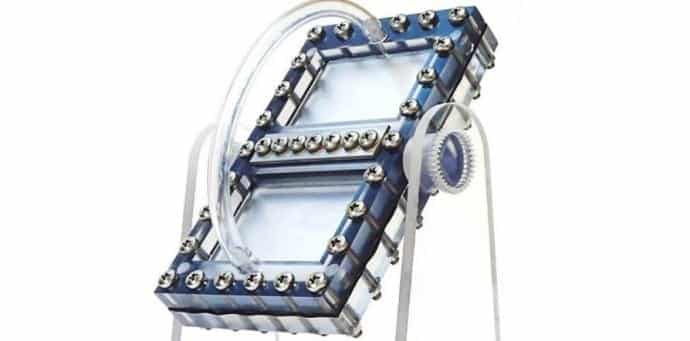Gravity is what makes this “Hourglass” liquid battery run
MIT scientists have designed an inventive new concept for a battery that depends on gravity to produce energy, which functions on the same fundamental principal as an hourglass. The device was explained in a recent paper for Energy and Environmental Science by the scientists.
Simply based on the essential concept of a battery where there is a positive and negative terminal, electrons are generated by chemical reactions inside the battery and accumulate the negative terminal because they are negatively charged. The electrons will flow to the positive terminal once a wire is connected between the two terminals. This wouldn’t be helpful all by itself, but the wire usually also connects a “load”—a light bulb, a motor, a radio circuit—and the energy is connected to power that device.
Developed in the 1970s, the liquid flow batteries are called so, because the materials used for the positive and negative electrodes are in liquid form, separated by a membrane. Except instead of solid slabs, any number of chemical compounds can be used, as the battery uses tiny particles in liquid slurry. However, even liquid flow batteries normally need complex systems involving storage tanks, pumps, and valves. Since there are far more chances for leaks or failures, it is costly to maintain.
Therefore, Yet-Ming Chang and his MIT colleagues thought of an alternative design concept for liquid flow batteries, which just depends upon gravity as a pump mechanism. It not only significantly decreases the difficulty of the whole system, but also reduces the total cost.
The device appears more like a windowpane than a traditional hourglass, but the concept is the same: the slurry comprising the particles flows from one end to the other via a narrow channel. By changing the angle of the device, you can change the rate at which energy is simply produced, similar to slanting an hourglass or egg timer that can slow or speed up the flow of grains of sand from one end to the other.
Currently, it is just a proof-of-concept design. However, Chang et al. are assertive that they can develop a viable prototype. The day they are able to achieve it, it could prove to be game-changer, for example, scaling up wind and solar power systems, by offering bigger grid-connected storage systems.
The recent years have seen a lot of interesting work coming up with creative ideas for new kinds of batteries. For example, a team of MIT researchers led by Angela Belcher in 2006 had developed new battery technology centred on a genetically engineered M13 virus, which was tiny and flexible enough to power tiny sensors which when implanted into the human body was capable of identifying cancer or similar disease.
On the other hand, Sony built a prototype biotech battery (technically a fuel cell) that uses glucose (sugar from sweet drinks like the Japanese beverage Pocari Sweat) to power the four-cell array. Another good source of glucose is blood, and Japanese researchers have come up with a fuel cell that runs on the stuff, as have teams of Rensselaer Polytechnic Institute and the University of British Columbia in Vancouver, Canada (for example, the latter is developed to power pacemaker).
